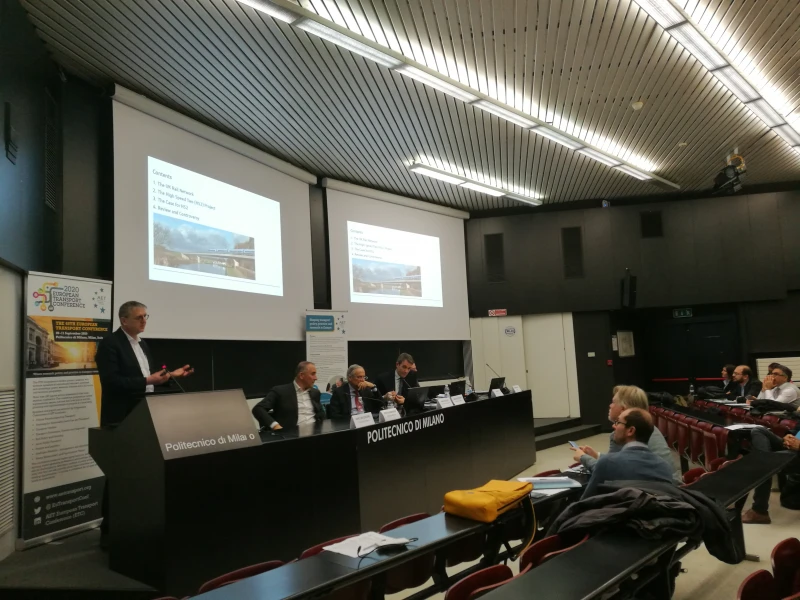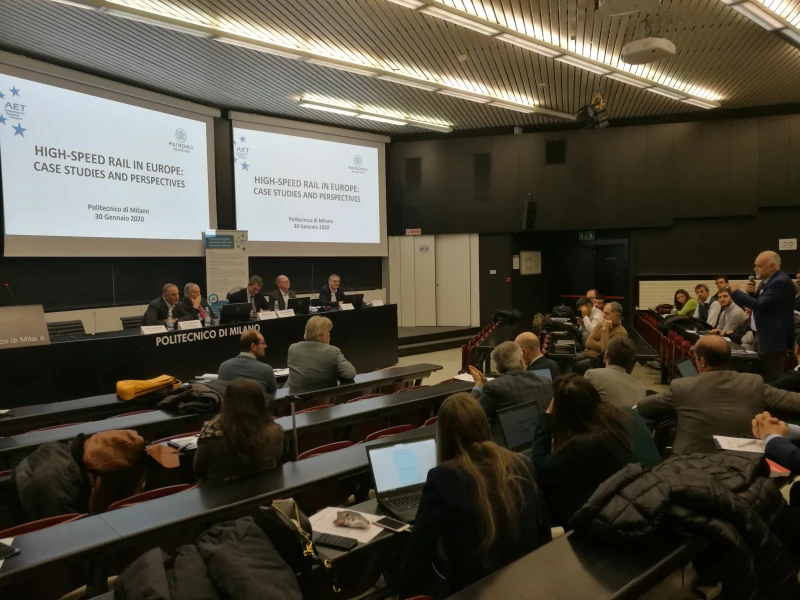-
Past ETC Papers

Browse, search and view papers from the past AET Conferences.
-
Members' Area

AET promotes networking and exchange of ideas, information and opportunities amongst members.
Conference Papers 2014
Frankfurt, Germany
ETC Conference Papers 2014
Phantom jam avoidance through in-car speed advice
Seminar
Day 1 (29 Sep 2014), Session 2, Motorway Management, 16:30 - 17:00
Status
Accepted, awaiting documents
Submitted by / Abstract owner
Leon Suijs
Authors
L.C.W. Suijs, Goudappel Coffeng, L. Krol, Goudappel Coffeng, L. Wismans, Goudappel Coffeng & University of Twente
Short abstract
In this research various in-car speed advice strategies for avoidance of formation and dissolving of formed phantom jams are developed and assessed using a microsimulation framework.
Abstract
Congestion has been rapidly increasing during the first decade of the twenty-first century. This has resulted in increasing economic losses and it also has serious implications for traffic safety. Of all congestion, over 20% is recognized as shockwave jams or so-called phantom jams. A reduction of the number of phantom jams originating on highways can therefore result in improved travel times and reduction of accidents.
We follow the definition of Kerner & Konhäuser (1993) who state that a phantom jam occurs without the existence of a physical bottleneck and is caused by the imperfect driving style of road users under metastable traffic conditions. In order to prevent a phantom jam to occur, we can focus on the cause of the perturbation, or on the metastability of the traffic flow. Previous studies have shown that the use of dynamic speed limits, displayed by road-side equipment, is a successful instrument to stabilize traffic flow and to dissolve formed phantom jams (e.g. Specialist algorithm tested in Dynamax project in The Netherlands). However, in some recent traffic management projects a shift from roadside to in-car applications was included (ref1-PPA, ref2-CHARM) This shift allows the provision of more personalised and accurate advice.
In our research we have concentrated on in-car speed-advice systems, where the penetration rate and the compliance rate of car drivers were varied. For this we set up a microsimulation study based on the VISSIM software, for a stretch of highway without any on- and off-ramps. We varied demand profiles and included different scenarios for speed advice, where the actual speed and the thresholds were varied. For this purpose we processed the speed and flow data that were detected by dual loop detectors, by using fuzzy logic rules in order to determine the spatio-temporal traffic conditions. Based on these traffic conditions a speed advice is given. The spatio-temporal traffic conditions are derived from Kerner’s three phase theory and the forecasting of traffic objects method (FOTO) by Kerner, Rehborn et al. (2004). Subsequently, this data is processed using clustering techniques to determine when and where on the network advice should be provided in order to prevent a phantom jam from occurring or to dissolve already existing phantom jams. In this paper we present the methodology and results of various advice strategies that we developed in this research. The advice strategies all have in common that they provide speed advice to a selection of drivers in order to stabilize traffic or dissolve a phantom jam. The strategies are evaluated using different performance measures (e.g. total travel time, total network outflow, number of phantom jams and total jam weight)
After calibration of the parameters of the microsimulation model, it turned out that we were able to reproduce phantom jams that occur in metastable traffic conditions without the need to control a specific vehicle (e.g. forcing a vehicle to brake abruptly or to switch lanes even when the available gap is small). Because the microsimulation model is stochastic by nature the location and time a phantom jam occurs is not fixed and may change when using another random seed. However, as expected, the occurrence of phantom jams did show a high correlation with high intensity waves, which are platoons of traffic under metastable traffic conditions. Over 80% of the phantom jams originated in a high intensity wave. As a result we tested the strategies using 50 repetitions (i.e. 50 different random seeds) and three different demand profiles. Analysis showed a significant reduction in the number of phantom jams of up to 75%. Besides that, a clear reduction of the number of abrupt speed drops has been observed on the road network, which is a clear indication for improved traffic safety. Although the number of phantom jams can be reduced significantly using the strategies developed in this research, we did not find any significant improvement in travel times. This may be explained by the fact that the advised speed is always below the current actual travel speed, and not all high intensity waves will result in a phantom jam. Thus there are occasions where a speed advice is provided where without the advice no phantom jam would have occurred.
Documents:
No documents yet.
Association For
European Transport
Forester House
Doctors Lane
Henley-in-Arden
Warwickshire, UK
B95 5AW
+44 (0) 15 64 793552
VAT number: 710 1866 64
Conference Supporters & Endorsers




Legal Entity
The Association for European Transport is registered as an Association ('vereniging') with the Chamber of Commerce for Haaglanden in The Netherlands under company number 27170096.
Built on Zenario




